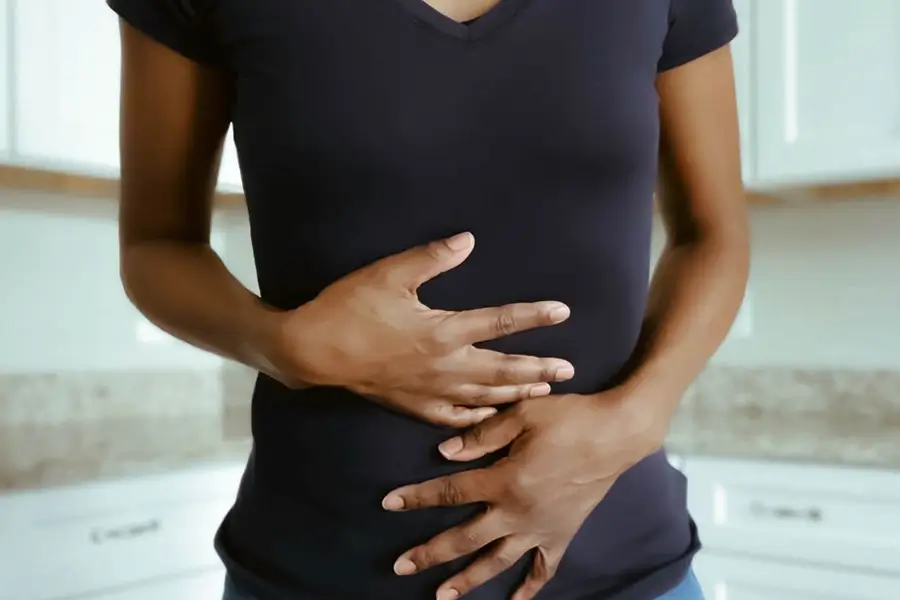What Can I Do About Fibroids and Bloating?
Uterine fibroids are noncancerous growths that develop in the muscular walls of the uterus. They are quite common, particularly in women of reproductive age, and can vary in size, number, and location within the uterus. While many women with fibroids may not experience any symptoms, for others, fibroids can cause a range of issues, including bloating and an enlarged abdomen. This article explores the relationship between fibroids and bloating, detailing how these growths can lead to abdominal swelling and what treatment options are available.

How does Bloating Affect Women?
Bloating caused by fibroids can significantly affect women’s lives at home, work, and in social and personal settings. At home, the discomfort and visible abdominal swelling can make everyday tasks more challenging and decrease overall energy levels. In a professional environment, bloating can lead to physical discomfort, affecting concentration and productivity, and may necessitate frequent bathroom breaks, which can be disruptive.
Socially, the visible bloating can cause self-consciousness, leading to reduced participation in social activities and a potential decline in social interactions. On a personal level, the discomfort and pain associated with bloating can interfere with intimate relationships and lower self-esteem. These impacts collectively reduce the quality of life, making it essential for women experiencing fibroid-related bloating to seek medical advice and appropriate treatment.
Understanding Fibroids
Fibroids, also known as leiomyomas or myomas, are benign tumors made up of muscle and fibrous tissue. They can grow in different parts of the uterus:
- Intramural fibroids grow within the uterine wall.
- Subserosal fibroids project to the outside of the uterus.
- Submucosal fibroids extend into the uterine cavity.
- Pedunculated fibroids are attached to the uterine wall by a stalk.
Symptoms and Impact
The symptoms of fibroids depend on their size, number, and location. Common symptoms include heavy menstrual bleeding, pelvic pain, frequent urination, and, importantly, bloating and a swollen abdomen. The latter symptoms are particularly distressing for many women as they can be mistaken for weight gain or pregnancy.
How Fibroids Cause Bloating
Fibroids can cause bloating and abdominal swelling in several ways:
- Size and Location: Large fibroids or multiple fibroids can physically enlarge the uterus, causing the abdomen to protrude. This can make a woman appear several months pregnant.
- Pressure on Organs: As fibroids grow, they can exert pressure on surrounding organs, including the bladder and intestines. This pressure can lead to symptoms such as frequent urination, constipation, and bloating.
- Inflammation and Fluid Retention: Fibroids can cause inflammation in the pelvic region, leading to fluid retention and a feeling of fullness or bloating in the abdomen.
Diagnosis and Treatment
If you suspect that fibroids are causing your bloating, it is important to consult with a healthcare provider for a proper diagnosis. Common diagnostic methods include:
- Pelvic Exam: A physical examination to check for an enlarged uterus.
- Ultrasound: Imaging tests to visualize the fibroids and their location.
- MRI: Detailed imaging to assess the size and number of fibroids.
Once diagnosed, treatment options for fibroids vary depending on the severity of symptoms and the size of the fibroids. They include:
- Medications: Hormonal treatments can help shrink fibroids and alleviate symptoms. These include birth control pills, gonadotropin-releasing hormone (GnRH) agonists, and anti-hormonal agents.
- Non-Invasive Procedures: MRI-guided focused ultrasound surgery (FUS) uses high-frequency sound waves to destroy fibroid tissue.
- Minimally Invasive Procedures: Uterine Fibroid Embolization (UFE) is a procedure where small particles are injected into the arteries supplying the uterus, blocking blood flow to the fibroids and causing them to shrink.
- Surgical Options: Myomectomy is the surgical removal of fibroids while preserving the uterus. In severe cases, a hysterectomy (removal of the uterus) may be necessary.
Uterine Fibroid Embolization (UFE)
One of the most effective treatments for fibroids, especially those causing significant bloating, is Uterine Fibroid Embolization (UFE). UFE is a minimally invasive procedure performed by an interventional radiologist. Here’s an overview of the UFE process:
- Procedure: A small incision is made in the groin area, and a catheter is inserted into the femoral artery. Using imaging guidance, the catheter is directed to the uterine arteries. Small particles are then injected into the blood vessels feeding the fibroids, blocking their blood supply. This causes the fibroids to shrink and eventually die.
- Advantages: UFE is less invasive than traditional surgical methods, has a shorter recovery time, and preserves the uterus, making it a suitable option for women who wish to maintain fertility.
- Effectiveness: Studies have shown that UFE is highly effective in reducing fibroid-related symptoms, including bloating and abdominal swelling. Most women experience significant relief within a few months of the procedure.
Fibroids can indeed cause bloating and abdominal swelling, among other symptoms. Understanding the nature of fibroids and the various treatment options available is crucial for managing these symptoms effectively. If you suspect that fibroids may be the cause of your bloating, consult with a healthcare provider to explore the best treatment options for your situation.
Uterine Fibroid Embolization (UFE) stands out as a particularly effective and minimally invasive treatment, offering significant relief from bloating and other fibroid-related symptoms. By addressing the underlying cause, UFE can help women regain their quality of life without the need for major surgery.
Reach out for help
Our patients want to make informed decisions about treatment with a trusted, world-class medical group that supports an effective pain management plan.
We have responded with processes that are minimally invasive and limit your loss of work and personal time. Our experienced physicians and staff keep you informed at each step of the process.
We always provide a personalized evaluation, treatment, and pain management plan. Our support continues after treatment with a comprehensive follow up plan.
